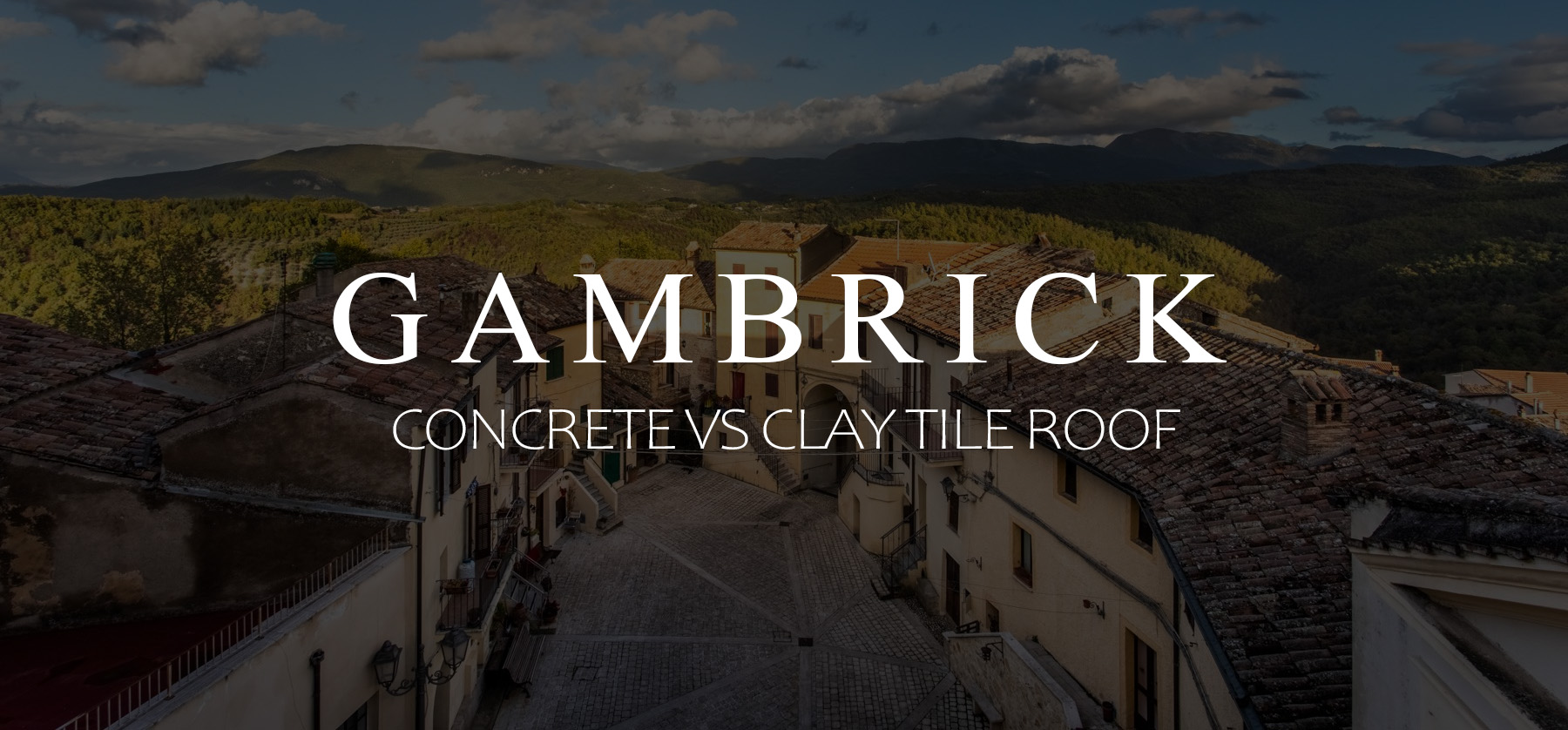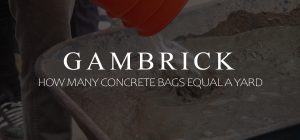Concrete Vs Clay Tile Roof
Clay roof tiles are the most popular roofing material in the world having been in use for centuries. And for good reason, they’re extremely durable, water tight, energy efficient, low maintenance, fire safe, and look great. But they cost more than the typical asphalt shingle your probably used to seeing. Here in the Unites States we primarily see them in warm weather like Nevada, Arizona, California and Florida. But they can be used anywhere and hold up well in colder climates. Although not as well as concrete. If you like the look and are comparing a concrete vs clay tile roof, there are a few important facts you should know.
Both concrete and clay tile roofs are great options for your home with a lot of similarities. But there are also a few key difference. The main one worth considering is durability and longevity. Clay tiles can last over 100 years but concrete typically lasts just 30-50. They’re more like a high grade asphalt shingle. Clay also costs more to buy and install. They’re both great roofing materials but in my opinion clay is better. It’s a premium roofing tile that can last a generation. There’s a reason why clay tiles have been the standard roofing shingle used around the world for over a thousand years. They work and they last. Concrete is basically a cheaper version of a classic clay tile.
Ahead we’ll look in detail at a concrete vs clay tile roof and discuss the pros and cons of each material along with lots of builder tips and info.
Mediterranean style homes with a clay tile roof.
What Are Clay Roof Tiles
Clay tiles are made by molding clay into a tile shape using a form and then baking them until hard. The density of the tile is determined by how long it’s heated and at what temperature.The type of clay used is also an important factor. Premium grade clay tiles that are fired for long periods of time and at high temperatures are extremely durable and can last for over a century.
Tiles come in a range of colors like white, yellow, orange, reddish and even brown. However, the most common color clay tile used is Terra-cotta. When people talk about a Terra-cotta roof they’re referring to clay tiles.
The high temperatures used to bake clay tiles helps seal the color so it will never peel or fade. There’s a wide variety of tile profiles, styles, finishes and colors to choose from. And because clay tiles are made from an all natural material, they are environmentally friendly and easily recycled.
Clay tiles are resistant to strong winds and fire. Because of the they’re shape, clay tiles protect the underlayment of your roof while also creating an air pocket that helps insulate the home.
Clay tiles are a premium roofing option that are very durable, energy efficient, long lasting and look great. They can last over 100 years which gives them a fantastic long term value.
Concrete tiles look like clay but have a darker appearance when unpainted.
What Are Concrete Roof Tiles
Concrete roof tiles are made with regular concrete. It’s a mixture of sand, cement, aggregate and water. The concrete is poured into molds and then heated. As they dry out, a chemical reaction occurs between the cement and water which is called curing. During the curing process the concrete tiles dry, harden and grow strong.
While the concrete tiles can remain plain gray, you can also add color to the mix or paint them. Concrete tiles are available in three styles.
- Flat. Totally flat with no curves similar to an asphalt roof shingle.
- Low Profile. These have a small curve.
- High Profile. A large curve that mimics the look of clay tiles.
Concrete tiles can simulate the look of other types of roofing by changing the mold design. These include clay, wood shake, slate, or stone tiles. They can also be made into different sizes.
Concrete tiles also offer a high level of durability but not nearly as much as clay. A typical concrete roof tile will last 30-50 years. Although they’re much cheaper to buy and install.
Closeup view of a clay Terra-Cotta style roof.
Style
Tile roofing has been around for centuries. The Chinese used baked clay tiles as far back as 10,000 B.C. And Mediterranean homes have used them almost as long. Because of that extremely long history tile roofs have an old world classic appeal that some people really love. They’re still is use today all over the world and are considered the popular form of roofing.
Here in the Unites States they’re not as popular as the rest of the world but we still use them quite a bit. Especially in warmer climates.
Concrete tiles mimic the style and color of clay for a lot less money. They can be molded into any shape, texture, or size and colored to match clay or something more unique.
If your looking for a classic and historical look then clay tiles are definitely the way to go. As much as concrete tiles are designed to mimic the look of clay, you can still tell them apart. However, if your looking for a more modern look from a painted tile and want to save money, then concrete tiles are a great option.
Italian homes using traditional clay Terra-cotta roof tiles.
Installation
We’re not going to talk about specific installation methods for either concrete or clay tile roofing here. there’s simply too much info to list and it requires it’s own article. However I will say the methods are almost identical. Concrete roof tiles and basically made to mimic a clay tile only with a cheaper material. They’re a lower cost option that installs basically the same.
However, the one difference I will mention here is weight. Concrete are heavier than clay when dry and a lot heavier when wet. If your used to installing clay then be prepared when you start working with concrete. It’s not a huge difference per tile, but over the course of an entire roof it really starts to add up. Especially when working in awkward locations or on scaffolding.
Carrying tiles around the roof is harder too. If each man can safely carry say 50 pounds at a time. That’s a lot more trips to take if your using concrete. Be prepared for the extra labor.
Closeup view of clay roof tiles cemented in place.
Repairs
With either clay or concrete tile roofs, repairs are fairly easy to do. And they’re done in pretty much the exact same way. Remove the damage tile and install a new one. We’ll write another article on how to install and repair tile roofs later because that’s too much info to detail here. But it’s generally not hard or expensive to do if you know how.
One of the advantages to using a tile roof is that you can easily identify and repair a damaged tile. It’s much harder to do with asphalt. A simple visual inspection will reveal any damaged or missing tiles. Cracked tiles are very easy to spot.
Italian village featuring classic clay Terra-cotta roofing tiles.
Composition
Clay tiles are made mostly from raw clay that’s mined from the earth. Other materials such as minerals and chemicals are added to help give the tiles their shape and added strength. The clay is then baked for a certain amount of time which helps determine its density.
Concrete tiles are made by mixing cement, sand and aggregate with water. Manufacturers sometimes add color to the mixture and other additives to increase it’s strength like fiber or chemicals hardeners. The concrete is then poured into a mold and heated.
The finished product takes on the characteristics of either the clay or concrete material it’s made out of. As far as roofing tiles go, clay is generally better. However concrete is cheaper.
Clay roofing tiles used as a cap to keep water out of this concrete masonry wall.
Other Uses
Believe it or not there are other uses for both clay and concrete tiles. They make an excellent cap for all sorts of applications including this concrete masonry wall. The walls was built out of solid stone and concrete. But to keep water out it’s been fitted with a clay tile cap The tiles act as a roofing for the wall and keep water out.
It’s a great way to blend the wall into the look of the homes while increasing it’s long term durability. If you have anything you’d like to keep dry consider using tile. Sheds, garages, pool houses, or any outdoor structure that needs a roof can all use tile.
Mediterranean home with a clay tile roof.
Differences Between A Clay Vs Concrete Tile Roof
Although clay and concrete tile roofs are very similar, they’re are a few big differences you should consider before choosing a material.
Water Absorption
One big difference between clay and concrete roof tiles is how they absorb water.
- Concrete tiles have a water absorption rate of about 10-15 percent.
- Clay tiles have a water absorption of about 5 percent.
Concrete is a porous material that absorbs and stores water in it’s pores. Although concrete may seem very flat and dense, it’s actually got lots of little holes and tunnels that water can fill.
Clay’s structure is different than concrete. It’s surface is flatter and more solid with a lot less pores which means it doesn’t absorb as much water.
As a result of absorbing so much water, concrete tiles are more prone to mold growth and stains. When concrete tiles are fully soaked, they’re also much heavier which adds more weight to the roof’s structure. A gallon of water weighs around 8 pounds and a concrete tile can absorb anywhere between 1-4 ounces of water depending on it’s size and composition. That can add up to a lot of extra weight.
This is also a big issue if you live in a cold climate. When concrete tiles absorb water and then freeze they can crack. This is called the freeze/thaw cycle. Clay tiles don’t typically have this problem.
Water can also help deteriorate concrete over time. Especially if it contains harmful additives like what’s in acid rain.
Because clay tiles have fewer water issues they last longer.
Weight
There is a significant difference in the dry weight of a concrete vs clay tile roof. Concrete tiles weigh almost 40 percent more than clay tiles.
- Concrete roofing tiles weigh between 950 to 1,200 pounds per 100 square feet on average. That’s 9 1/2 to 12 pounds per square foot.
- Clay roofing tiles weighs between 600 to 650 pounds per 100 square feet on average. That’s 6 to 6 1/2 pounds per square foot.
Because of this significant weight difference you have to make sure your roof structure can handle the weight before installing concrete tiles. It’s also important to note that this is dry weight and not wet weight. Concrete absorbs a lot more water than clay tile which means in addition to the extra weight of the tiles, you’ll also have to deal with additional water weight.
If you live in a hot dry climate like Arizona or Nevada, concrete roof tiles can be a good option because they won’t absorb much water. When it does rain the heat will dry them up quickly. However, if you live in a climate like Seattle where it rains almost daily, I would opt for clay.
The weight difference also adds a bit to the labor cost. When working on a roof carrying heavy tiles around, the lighter they are the better.
Cracking
Both clay and concrete tiles can crack.
Clay tiles are extremely durable and can last over 100 years, but they’re not immune to damage. They can crack or shatter when exposed to the freeze/thaw cycle, which is why they’re more commonly found in warmer climates. Although we use them in cold climates too. It’s rare to see them crack, but possible.
Concrete roof tiles also have their issues with cracking. Because of it’s internal structure concrete absorbs a lot of water. That water can freeze and crack the tiles. Just like with clay tiles this is a rarity, but it does happen from time to time.
Both clay and concrete roof tiles are very resistant to impact cracks, but it can still happen. Roof tiles are very popular in Florida where hurricanes happen yearly. They don’t use as much asphalt shingles as the Northeast and other areas of the country. And the roofs do fine. Every now and then you’ll get a few cracked tiles from impacts but it’s rare. Although when either a clay or concrete roof tile cracks it’s generally a total loss. The tile will have to be removed and replaced.
Maintenance
Both clay and concrete roof tiles are low maintenance. But concrete requires more.
Due to the heavier weight and water issues, more maintenance if typically required. You may have to power wash the roof every so often to remove mold growth. And if the tiles are sealed or painted, that would have to be reapplied as needed.
Since clay tiles don’t have water issues and the color is baked in, you don’t have either of these maintenance issues.
Repair maintenance isn’t typically required with either roofing tile but concrete tends to be a little less durable. We see more cracking for various reasons than with clay. And they don’t last nearly as long.
Maintaining color is a big difference when comparing a concrete vs clay tile roof. Clay has a natural coloring that doesn’t fade and is hard to stain. However concrete is naturally gray so it has to be artificially colored. These colors with fade and need maintenance.
Sealing
Since concrete has a natural tendency to absorb water it can be sealed. When a sealant is added to a concrete surface it penetrates into the pores and sits above the concrete. Water can’t penetrate into the concrete because it’s blocked by the sealant. When properly sealed, a concrete tile roof can actually absorb less water than a clay roof. However it has to be reapplied every 6-12 months. This is something most homeowners are not willing to do.
Paint is another form of a sealant. The paint sits on top of the concrete surface and prevents water from penetrating. Although paint is too thick to absorb into the concrete’s tiny pores. As long as the concrete tiles are painted they won’t absorb water. However paint fades, chips, peels, cracks and deteriorates over time from sun and weather damage. If you don’t mind the maintenance, paint will keep your concrete tiles dry and need less applications than a sealer.
Clay doesn’t need paint or a sealer because it naturally doesn’t absorb much water.
Color
Clay is a naturally occurring material that’s already colored. Because of this, clay tiles can maintain their original color for many years. Even when exposed to various weather conditions and constant sun a clay tile will retain it’s color. And because they don’t absorb much water, clay tiles are hard to stain and easy to clean. However a drawback to clay is that they only come in a few colors unless you paint them which would then require maintenance.
Concrete is naturally gray so if you want color it has to be added. Coloring can be included inside the concrete mixture which gives it color all the way through the tile. This form of coloring fades less than a surface coat but can’t be changed or freshened up. When the concrete color fades there’s nothing you can do about it.
Another way to color concrete tiles is to paint them. Since paint is just a surface level coloring it’s prone to fading, peeling, chipping, cracking, etc. Paint jobs always look great when new but require a lot of maintenance work. But one of the great things about paint is that you’ll have so many color options.
Another option is concrete staining. Stains penetrate into the concrete and chemically react which permanently changes the color. Typically these colors are muted and more natural. They won’t peel crack, or chip but they will fade. And when they do there’s not much you can do except apply more stain or paint.
The most popular color is the natural look of a clay tile roof even when using concrete. However many homeowners use painted tile.
Durability
Both clay and concrete roof tiles are more durable than asphalt shingles. They’re also more durable than many other forms of roofing. But there’s a big difference between the two.
Clay tiles easily win here because they can last over 100 years. In some cases a lot longer. Concrete roof tiles generally need replacing after 30-50 years.
But there’s more to measuring durability than just comparing how long the tiles last. Clay tiles don’t have the same water issues as concrete so mold and mildew aren’t typically a problem. They’re also not generally painted which means better cosmetic durability too. And they don’t crack as easily which means tiles don’t need replacing as often.
Cost
Cost is where the two roofing tiles are very different. Concrete roof tiles are basically a low cost version of clay tiles.
- Concrete tiles cost $4 to $10 per square foot on average.
- Clay tiles cost $7 to $30 per square foot on average.
These numbers are for the roofing tiles only. In general installation of a clay tile roof costs more than concrete. This is mainly due to the higher cost of the tiles. As material costs go up so does the cost to handle and install them. A clay tile roof is considered a premium option while a concrete tile roof is considered an more affordable option to clay. Essentially the look for less.
Since concrete and clay tiles look very similar and are both very durable, you’ll have to decide if that extra 50 years+ of durability is worth the extra money. To me it definitely is. The long term value of a roofing material with almost zero maintenance that will last a lifetime is worth the higher up front cost. However, if you don;t have the money for clay, concrete is a great second option and is generally considered better than asphalt.
Clay tiles are more costly than concrete because it’s more difficult to acquire clay than concrete. Because of this, clay tiles are considered more of a premium product. After installation, the cost of an average clay tile roof job can easily be between $20,000 and $50,000.
Concrete is very common throughout the world and is fairly cheap to make. Concrete tiles aren’t cheap however. They’re more than the typical asphalt roofing shingle. But considerably less than clay. The same size roof finished in concrete tiles would cost around $10,000 to $20,000.
Summary: Concrete Vs Clay Tile Roof
Clay roof tiles are the most popular roofing material in the world having been in use for centuries. And for good reason, they’re extremely durable, water tight, energy efficient, low maintenance, fire safe, and look great. But they cost more than the typical asphalt shingle your probably used to seeing. Here in the Unites States we primarily see them in warm weather like Nevada, Arizona, California and Florida. But they can be used anywhere and hold up well in colder climates. Although not as well as concrete. If you like the look and are comparing a concrete vs clay tile roof, there are a few important facts you should know.
Both concrete and clay tile roofs are great options for your home with a lot of similarities. But there are also a few key difference. The main one worth considering is durability and longevity. Clay tiles can last over 100 years but concrete typically lasts just 30-50. They’re more like a high grade asphalt shingle. Clay also costs more to buy and install. They’re both great roofing materials but in my opinion clay is better. It’s a premium roofing tile that can last a generation. There’s a reason why clay tiles have been the standard roofing shingle used around the world for over a thousand years. They work and they last. Concrete is basically a cheaper version of a classic clay tile.
If you have any questions or comments e-mail us any time. We’d love to hear from you.





























